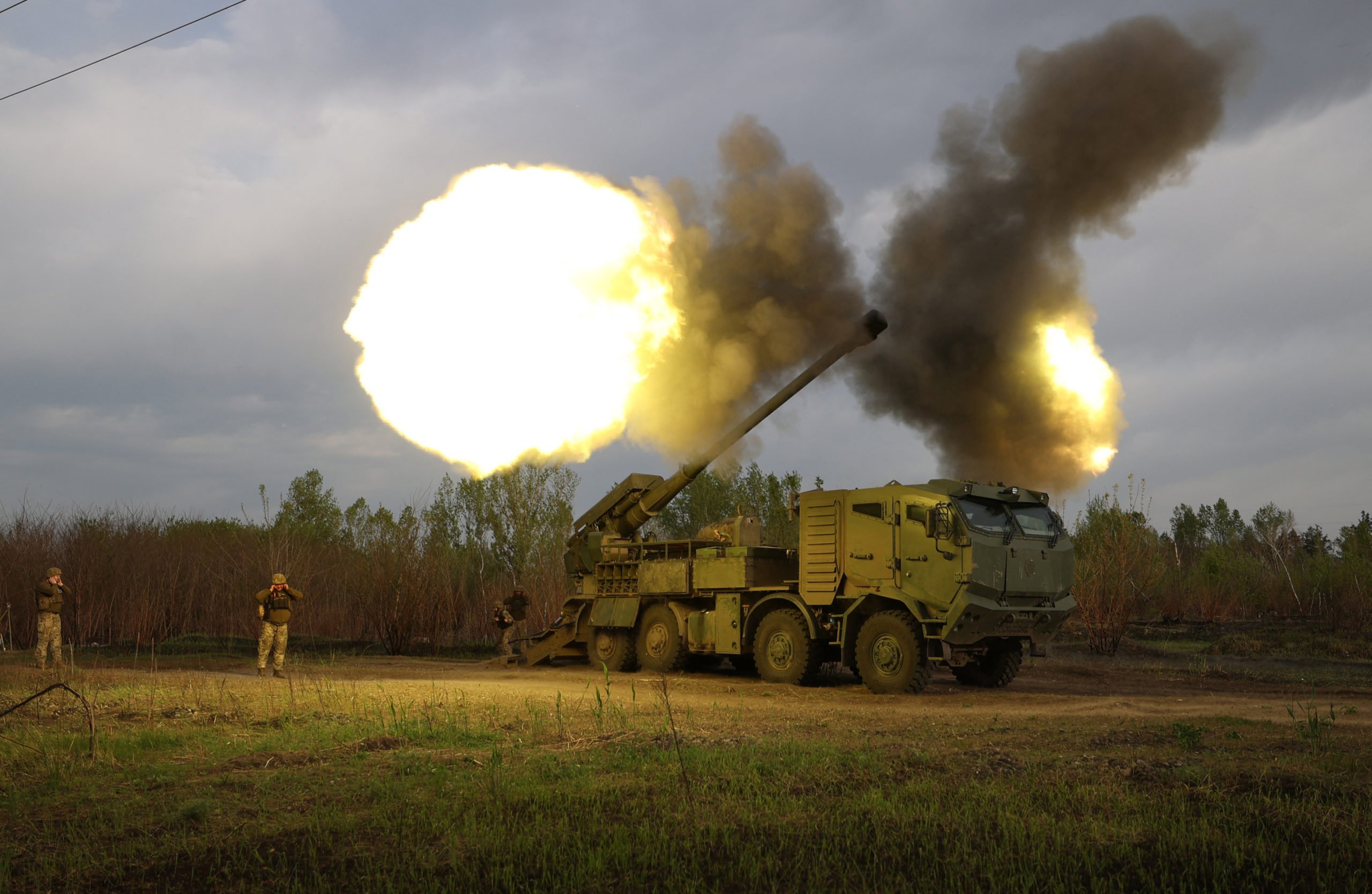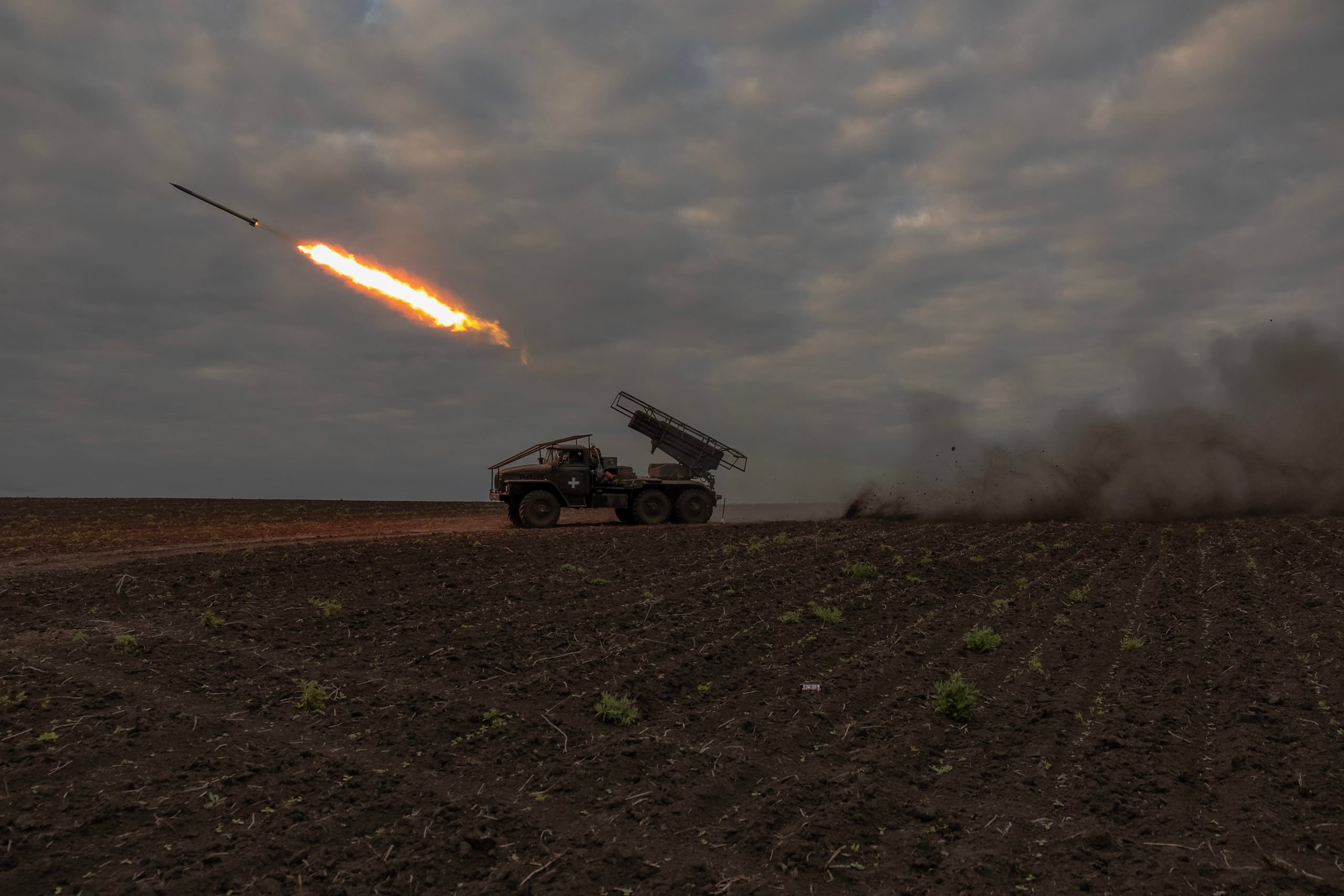Russia’s new war tactics are paralyzing U.S.-provided weapons mid-flight, creating a frustrating challenge for Ukrainian forces, The Wall Street Journal reported Wednesday.
Among the weapons the U.S. has provided to Ukraine in its ongoing war against Russia are precision-guided missiles and air weapons, which use an array of technologies to hone in on their targets. However, Russia has adapted its electronic warfare capabilities to scramble some of these weapons systems mid-air, rendering them useless or compromising their ability to hit targets with precision, Ukrainian commanders told the WSJ. (RELATED: Biden Pentagon Could Buy Almost A Dozen Aircraft Carriers With What It’s Set To Spend On One Missile Program)

TOPSHOT – Gunners from 43rd Separate Mechanized Brigade of the Armed Forces of Ukraine fire at Russian position with a 155 mm self-propelled howitzer 2C22 “Bohdana”, in the Kharkiv region, on April 21, 2024, amid the Russian invasion in Ukraine. (Photo by ANATOLII STEPANOV/AFP via Getty Images)
“We should assume that adaptation will always occur, and the Russians have adapted to a variety of things,” Rob Lee, a senior fellow at the Foreign Policy Research Institute, told the WSJ. “The capabilities will be most effective immediately after they are introduced, and adversaries will develop countermeasures over time.”
For example, the Excalibur artillery round, a shell equipped with precision guidance provided by the U.S. in mid-2022, initially proved incredibly effective at striking Russian tanks and artillery with laser focus, according to the WSJ. However, Russian forces quickly adapted with electronic countermeasures within weeks and were able to confuse the shell’s GPS tracking system, causing it to fly astray or fail to detonate on impact.
Russian electronic interference is causing U.S.-provided missiles for the High Mobility Artillery Rocket Systems (HIMARS) to suffer a similar fate, despite the system being credited with turning the tide in Ukraine’s favor during the summer of 2022, according to the WSJ. Ukrainian forces have sidelined U.S.-provided and Boeing-manufactured small-diameter bombs after they began to fail entirely because of electronic disruption.

TOPSHOT – Ukrainian servicemen of the 92nd Assault Brigade fire BM-21 ‘Grad’ multiple rocket launcher toward Russian positions, in the Kharkiv region, on May 15, 2024, amid the Russian invasion of Ukraine. President Volodymyr Zelensky cancelled planned trips abroad over the fresh offensive and the military was sending more troops to Kharkiv to hold back Russian advances, Kyiv said. (Photo by ROMAN PILIPEY/AFP via Getty Images)
Other Western weapons are still managing to evade Russia’s cyberwarfare capabilities and hit their targets with precision, including U.S.-made surface-to-surface ballistic missiles and European Shadow Storm cruise missiles, according to the WSJ. Ukrainian officials warned that it may only be a matter of time until Russia learns how to counter these weapons. (RELATED: Businessman Admits To Illegally Exporting ‘Sophisticated And Controlled’ Aircraft Technology To Russian Security Service, Feds Say)
Some of the weapons the U.S. is delivering to Ukraine are also older and less frequently used by the U.S. military in favor of newer systems, according to the WSJ. Ukraine isn’t necessarily getting access to these newer systems, and weapons manufacturers are slower to provide software upgrades to the older systems Kyiv has been forced to rely on.
“Warfare is about the speed of adaptation,” retired Air Marshal Edward Stringer, former head of operations at the British Ministry of Defense, told the WSJ. “If you drip-feed an antibiotic weekly, you’ll actually train the pathogen — and we have trained the pathogen… We didn’t need to give them that time, but we did.”

TOPSHOT – A Ukrainian serviceman holds a MANPADS (Man-Portable Air-Defence Systems) “Stinger” anti-aircraft weapon as they scan for possible air targets, onboard a Maritime Guard of the State Border Service of Ukraine boat as it patrols in the northwestern part of the Black Sea on December 18, 2023, amid the Russian invasion of Ukraine. (Photo by ANATOLII STEPANOV/AFP via Getty Images)
Ukraine’s domestic weapons production, while not as advanced as the U.S., has put a high priority on frequently equipping systems with software upgrades to improve their chances against Russian targets, according to the WSJ. A U.S. official told the WSJ that the Pentagon is “very aware” of Russia’s advancing electronic warfare capabilities and is working to ensure U.S.-provided weapons keep pace.
The U.S. alone has provided Ukraine with roughly $70 billion in military assistance since the country’s war with Russia began in 2022. Western allies have similarly provided Ukraine with tens of billions in military aid.
Despite the large amount of funding being given, American military assistance has done little to move the needle in the war in Kyiv’s direction. Ukrainian forces are struggling to maintain defensive positions along the eastern theater of the war as Russian forces, with better manpower and weapons than Ukraine, continue to slowly push forward and seize territory.
All content created by the Daily Caller News Foundation, an independent and nonpartisan newswire service, is available without charge to any legitimate news publisher that can provide a large audience. All republished articles must include our logo, our reporter’s byline and their DCNF affiliation. For any questions about our guidelines or partnering with us, please contact licensing@dailycallernewsfoundation.org.



